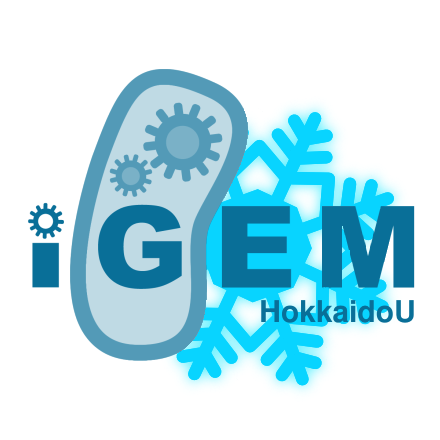Team:HokkaidoU Japan
From 2011.igem.org
| Line 1: | Line 1: | ||
| - | [[ | + | [[Team:HokkaidoU_Japan/Safety|Safety]] |
==Preliminary project description== | ==Preliminary project description== | ||
[[File:IGEM_HokkaidoU_Logo_transparent.png|200px|right]] | [[File:IGEM_HokkaidoU_Logo_transparent.png|200px|right]] | ||
Revision as of 01:34, 3 September 2011
Preliminary project description
This year, we aimed to further develop of "Dr. E. coli": our project of iGEM 2010. Dr. E. coli can inject desired protein molecules into a target eukaryotic cell through a syringe like organelle named Type 3 Secretion System (T3SS). Pathogenic gram-negative bacterium such as Salmonella has T3SS. In nature it is used to inject virulence effector proteins into a target eukaryotic cell. Last year, we showed that T3SS works in E. coli by injecting GFP into RK13 cells.
This year, we tested its performance and tried to make this injection system more convenient. To achieve these goals, we designed a plasmid backbone which can instantly produce ready-to-inject fusion proteins from ordinary biobrick part. Using it, we tried to further characterize the system. For instance, we screened a library of proteins to see which of them we can inject.
For human practice, we held a Science Gallery. We exhibited awesome photographs related with biotechnology in public. We tried to catch the pedestrians’ interest in current synthetic biology and investigated their thoughts on it.
Safety proposal
1. Would any of your project ideas raise safety issues in terms of:
- researcher safety,
- public safety, or
- environmental safety?
Our study will not contain any manipulation associated with pathogenic bacteria, live salmonella bacteria. Although we are planning to use a part of Salmonella's genome which was obtained from Salmonella Genetic Stock Centre (SGSC), our instructor obtained appropriate permission from the safety officer of genetic recombination in our universities. These E. coli were acknowledged as non-pathogenic and permitted to be used under P1 safety level.
Our lab is equipped appropriately for the manipulation and genetic recombination of bacterial cells. Team members are instructed according to the safety training manual.
2. Do any of the new BioBrick parts (or devices) that you made this year raise any safety issues? If yes,
- did you document these issues in the Registry?
- how did you manage to handle the safety issue?
- How could other teams learn from your experience?
Currently there are no BioBricks which raise any safety issues.
3. Is there a local biosafety group, committee, or review board at your institution?
- If yes, what does your local biosafety group think about your project?
- If no, which specific biosafety rules or guidelines do you have to consider in your country?
We have “the safety office of genetic recombination in Hokkaido University”.
4. Do you have any other ideas how to deal with safety issues that could be useful for future iGEM competitions? How could parts, devices and systems be made even safer through biosafety engineering?
Currently we don't have any suggestions.
 "
"
